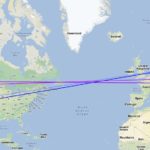I don’t know what it is about the climate in Kiev — or, given my other visits, all of Ukraine — but I am always hot and sucking down fluids. I know that Ukraine is about 5 degrees further north in latitude than Oregon, and it’s much further inland, but I am always surprised by how dehydrated I am when I visit. I’m even more surprised that no one else is. I will occasionally see people walking around with water bottles, but that is definitely the exception. And while I have preferred wearing shorts (not that it helps all that much with staying cooler), adults here almost never wear shorts outside. I’ve only seen a handful of men or women in shorts, and from the looks I observe when walking the streets, people are decidedly puzzled to see me in such a state. Maybe I just seem too dignified for shorts-wearing.
Wearing shorts can be a bit of a hindrance for the visitor in Kiev, particularly if said visitor has come to view the city’s many, many churches. There are rules, and shorts for both sexes is a no-no. I’ve tried to be respectful of that, although I did get chastised yesterday for sitting in the vestibule of one church with my legs crossed. Oops.
I’ve also been a bit hamstrung these past couple days because it appears I have pulled my Achilles tendon. I think that after walking up and down — mostly up, it has felt like — some of Kiev’s wildly picturesque and utterly uneven cobblestone streets, I think I just overextended that darn tendon. This wouldn’t be as much of a problem at home, where I could get around to most places by car; but in Kiev, walking is definitely a principal of getting around. (Have I mentioned that, like Rome, Kiev was built on seven hills? I’m pretty sure I’ve been up all of them now…)
Although getting around has been a bit harder, it hasn’t been impossible, and so yesterday I found myself at one of Kiev’s two botanical gardens. This was the larger of the two, the National Botanical Gardens. I had seen pictures of the smaller one, so I had a certain expectation in mind. As it was, I came away a little disappointed. It was OK, but I couldn’t help but compare it both to the pictures and to the Kew Botanical Gardens in London, and unfortunately Kiev came out the loser. I am sure that both places have their merits, but I just liked Kew a bit better.
The trip to and from the gardens, though, couldn’t have been easier. There is a bus that goes from a nearby Metro station to right there. Sure, it took a bit of time, and buses in Ukraine are almost always full (and not always with people that possess he best grooming habits, if you know what I mean), but at a mere 2 UAH — about 25 cents — you just can’t beat the price.
A bit of respite at the apartment and then it was a walk down to Maidan Square. This is a focal point in downtown kiev, and a principal tourist area. This is also where the “Orange Revolution” demonstrations took place, several years ago. It was pretty full, though not jam packed like it had been on Subday during Kiev Days, and at 9 pm I think I found out why: http://www.youtube.com/watch?v=JupgAV9xETs.
For those willing or able to click that link, Maidan has a series of fountains and at 9, loudspeakers in the Square start playing some music, to which the fountains light up and pulse their streams of water. It’s all pretty interesting and fun to watch, especially on a pleasant evening with a bit of breeze.
